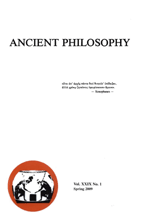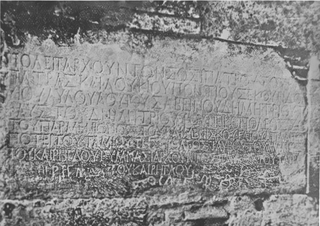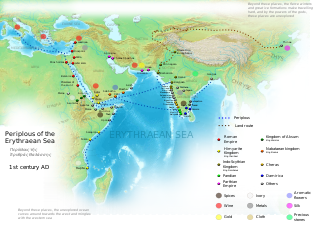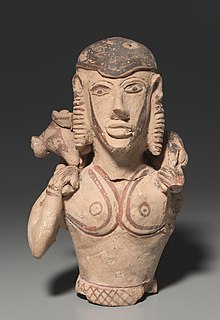 W
WVarious alphabetic writing systems were in use in Iron Age Anatolia to record Anatolian languages and Phrygian. Several of these languages had previously been written with logographic and syllabic scripts.
 W
WThe American Journal of Ancient History is a peer-reviewed academic journal covering ancient history and classical studies. It was established in 1976 at Harvard University and is published by Gorgias Press. The journal is abstracted and indexed by L'Année philologique. The editor-in-chief is T. Corey Brennan.
 W
WThe American Journal of Philology is a quarterly academic journal established in 1880 by the classical scholar Basil Lanneau Gildersleeve and published by the Johns Hopkins University Press. It covers the field of philology, and related areas of classical literature, linguistics, history, philosophy, and cultural studies. In 2003, the journal received the award for Best Single Issue from the Professional and Scholarly Publishing Division of the Association of American Publishers. The current editor-in-chief is Joseph Farrell.
 W
WAncient Philosophy is a peer-reviewed academic journal devoted to the study of ancient Greek and Roman philosophy and science. Since 1980 it has published over 1,300 articles and reviews in this field. This journal has a Level 2 classification from the Publication Forum of the Federation of Finnish Learned Societies. and a SHERPA/RoMEO "green" self-archiving policy. It is edited by Ron Polansky in the Department of Philosophy at Duquesne University. It is published on behalf of Mathesis Publications by the Philosophy Documentation Center.
 W
WArethusa is an academic journal established in 1967. It covers the field of Classics using an interdisciplinary approach incorporating contemporary theoretical perspectives and more traditional approaches to literary and material evidence. It frequently features issues focused on a theme related the classical world. The current Editor in chief of the journal is Martha Malamud. The journal is named for the mythical nymph Arethusa and published three times each year in January, May, and September by the Johns Hopkins University Press.
 W
WPiotr Ignacy Bieńkowski was a Polish classical scholar and archaeologist, professor of Jagiellonian University.
 W
WClassical Philology is a peer-reviewed academic journal established in 1906. It is published by the University of Chicago Press and covers all aspects of Graeco-Roman antiquity, including literature, languages, anthropology, history, social life, philosophy, religion, art, material culture, and the history of classical studies. The editor-in-chief is Sarah Nooter.
 W
WThe Classical Receptions Journal is a peer reviewed academic journal of reception studies, covering all aspects of the reception of the texts and material culture of ancient Greece and Rome from antiquity to the present day. It is published by Oxford University Press.
 W
WThe Rev. Edward Hartopp Craddock, D.D. was an Oxford college head in the 19th century.
 W
WA Dictionary of Greek and Roman Antiquities is an English language encyclopedia first published in 1842. The second, improved and enlarged, edition appeared in 1848, and there were many revised editions up to 1890. The encyclopedia covered law, religion, architecture, warfare, daily life, and similar subjects primarily from the standpoint of a classicist. It was one of a series of reference works on classical antiquity by William Smith, the others cover persons and places. It runs to well over a million words in any edition, and all editions are now in the public domain.
 W
WThe Dictionary of Greek and Roman Geography was the last of a series of classical dictionaries edited by the English scholar William Smith (1813–1893), which included as sister works A Dictionary of Greek and Roman Antiquities and the Dictionary of Greek and Roman Biography and Mythology. It was first published in 1854, and last reissued in 2005.
 W
WCicero's Divinatio in Caecilium is his oration against Quintus Caecilius in the process for selecting a prosecutor of Gaius Verres. Cicero asserts that he, rather than Q. Caecilius, will make the better prosecutor of Verres, the Roman magistrate notorious for his misgovernment of Sicily. It is the only surviving text of a rhetorical genre, the divinatio, that has survived.
 W
WMortimer Lamson Earle, Ph. D. (1864–1905) was an American classical scholar.
 W
WThe Edinburgh Readings on the Ancient World is a book series that aims to provide an introduction to key themes in the history of the ancient world. The series is published by Edinburgh University Press. Each volume takes the form of an introduction by a specialist in the field followed by translations of primary sources, explanations of key terms and other material.
 W
WThe exomis was a Greek tunic used by the workers and the light infantry. The tunic largely replaced the older chitoniskos as the main tunic of the hoplites during the later 5th century BC. It was made of two rectangles of linen, which were stitched together from the sides to form a cylinder, leaving enough space at the top for the arms. An opening at the top was also left for the head. The cylinder was gathered up at the waist with a cloth belt using a reef knot, which made the cloth fall down over the belt, hiding it from view. To allow freedom of movement to the right arm, the seam at the right shoulder was taken apart, and the right hand was passed through the head opening.
 W
WA glyptotheque is a collection of sculptures. It is part of the name of several museums and art galleries.
 W
WThe Greeks is a 1951 non-fiction book on classical Greece by University of Bristol professor and translator H. D. F. Kitto. The book was first published as a hardback copy by Penguin Books, but has been republished in several formats since its initial publication. The Greeks serves as an introduction to the whole range of life in ancient Greece and established Kitto as one of the foremost Grecian scholars of his time.
 W
WA himation was a type of clothing, a mantle or wrap worn by ancient Greek men and women from the Archaic through the Hellenistic periods. It was usually worn over a chiton and/or peplos, but was made of heavier drape and played the role of a cloak or shawl. When the himation was used alone, without a chiton, and served both as a chiton and as a cloak, it was called an achiton. The himation was markedly less voluminous than the Roman toga. It was usually a large rectangular piece of woollen cloth. Many vase paintings depict women wearing a himation as a veil covering their faces.
 W
WThe Journal of Early Christian Studies is an academic journal founded in 1993 and is the official publication of the North American Patristics Society. It is devoted to the study of patristics, that is Christianity in the ancient period of roughly C.E. 100–700. The current editor is Stephen Shoemaker of The University of Oregon. The journal is published quarterly in March, June, September, and December by the Johns Hopkins University Press.
 W
WThe Journal of Hellenic Studies is an annual peer-reviewed academic journal covering research in Hellenic studies. It also publishes reviews of recent books of importance to Hellenic studies. It was established in 1880 and is published by Cambridge University Press on behalf of the Society for the Promotion of Hellenic Studies. The editor-in-chief is Lin Foxhall.
 W
WA kynodesmē was a cord or string or sometimes a leather strip that was worn by some athletes in Ancient Greece and Etruria to prevent the exposure of the glans penis in public. It was tied tightly around the akroposthion, the part of the foreskin that extends beyond the glans.
 W
WLaelius de Amicitia is a treatise on friendship (amicitia) by the Roman statesman and author Marcus Tullius Cicero, written in 44 BC.
 W
WOctavia is a Roman tragedy that focuses on three days in the year 62 AD during which Nero divorced and exiled his wife Claudia Octavia and married another. The play also deals with the irascibility of Nero and his inability to take heed of the philosopher Seneca's advice to rein in his passions.
 W
WA pinacotheca was a picture gallery in either ancient Greece or ancient Rome. The name is specifically used for the building containing pictures which formed the left wing of the Propylaea on the Acropolis at Athens, Greece. The Pinacotheca was located next to the temple of Athena Nike. Though Pausanias speaks of the pictures "which time had not effaced", which seems to point to fresco painting, the fact that there is no trace of preparation for stucco on the walls implies that the paintings were easel pictures. The Romans adopted the term for the room in a private house containing pictures, statues, and other works of art.
 W
WPolitarch was a Hellenistic and Roman-era Macedonian title for an elected governor (archon) of a city (polis). The term had been already attested in the Acts of the Apostles (17:6,8) concerning Thessalonica, as well in modern archaeology. The institution is called Politarchate and the variant ptoliarchos appears in a poetic epigram. The first evidence of the title is dated to the reign of Perseus in Amphipolis, where the king with two politarchs honoured Artemis Tauropolos after a Thracian campaign. One of the earliest extant inscriptions to use the term "Politarch" was located on the Vardar Gate in Thessaloniki. The Gate was unfortunately destroyed in 1876 but the inscription, which dates to the 2nd Century AD, can now been seen in the British Museum in London.
 W
WProbus: International Journal of Latin and Romance Linguistics is a peer-reviewed academic journal of Latin and Romance linguistics, published by de Gruyter Mouton. Its editor-in-chief is Leo Wetzels.
 W
WErwin Rohde was one of the great German classical scholars of the 19th century.
 W
WSaraostus also called Syrastrene(also Surastrene, modern Saurashtra in India) was the name given by the Greeks to the area of Saurashtra and parts of south-western Gujarat."The Greeks ... took possession, not only of Patalena, but also, on the rest of the coast, of what is called the kingdom of Saraostus and Sigerdis. In short, Apollodorus says that Bactriana is the ornament of Ariana as a whole; and, more than that, they extended their empire even as far as the Seres and the Phryni."
 W
WWilfred Harvey Schoff (1874–1932) was an early twentieth-century American antiquarian and classical scholar.
 W
WSigerdis is a name given by the ancient Greeks to a part of the northwestern South Asia. It seems to correspond to the Sindhu, the delta of the Indus river, today's area of Sindh in southern Pakistan.
 W
WA stephane was a metal arc, which was like a fancy headband, higher in the center than along the sides, to be set on a female hairstyled or veiled head, which extended down behind the ears. Many of ancient Greek and Roman coins show on obverse queen's portrait wearing a veil with a stephane.
 W
WTetartemorion is the name of a silver coin minted in Ancient Greece, valued at 1/4 of an obol. Its name means "quarter part", from tetarton, meaning a fourth, and morion part, portion.
 W
WA tholos, in Latin tholus, is an architectural feature that was widely used in the classical world. It is a round structure, usually built upon a couple of steps (podium), with a ring of columns supporting a domed roof.
 W
WTransactions of the American Philological Association is a peer-reviewed academic journal established in 1869 and the official publication of the American Philological Association. It covers the history, culture, and language of ancient Greek and Roman societies. The journal is published biannually by the Johns Hopkins University Press.
 W
WGonda Aline Hector Van Steen is a Belgian-American classical scholar and linguist, who specialises in ancient and modern Greek language and literature. Since 2018, she has been Koraes Professor of Modern Greek and Byzantine History, Language and Literature, the first woman to hold this position, and Director of the Centre for Hellenic Studies at King's College London. She previously held the Cassas Chair in Greek Studies at the University of Florida, and taught at the University of Arizona and at Cornell University. She has also served as the President of the Modern Greek Studies Association (2012–2014).
 W
WA zoster was a form of girdle or belt worn by men and perhaps later by women in ancient Greece, from the Archaic period to the Hellenistic period.